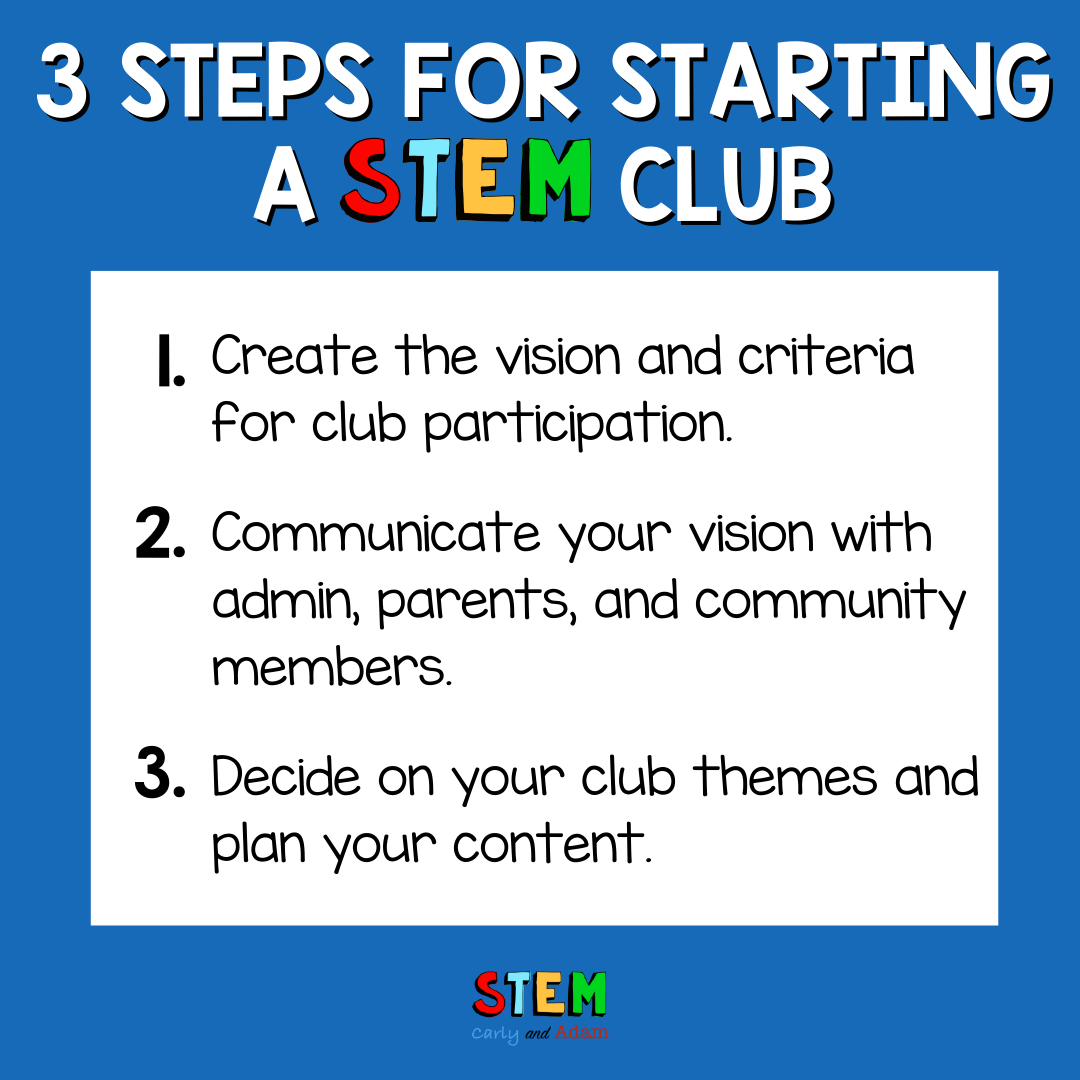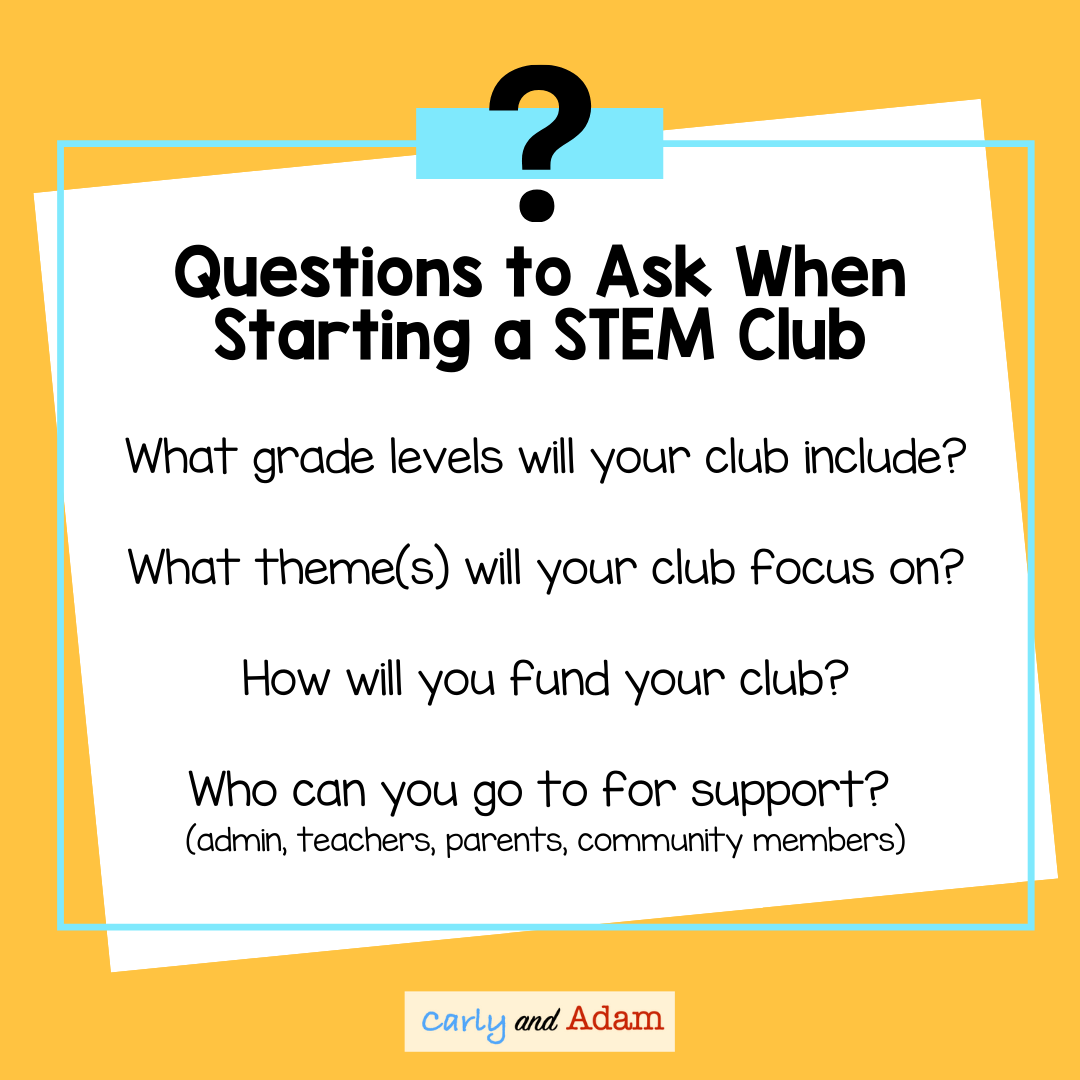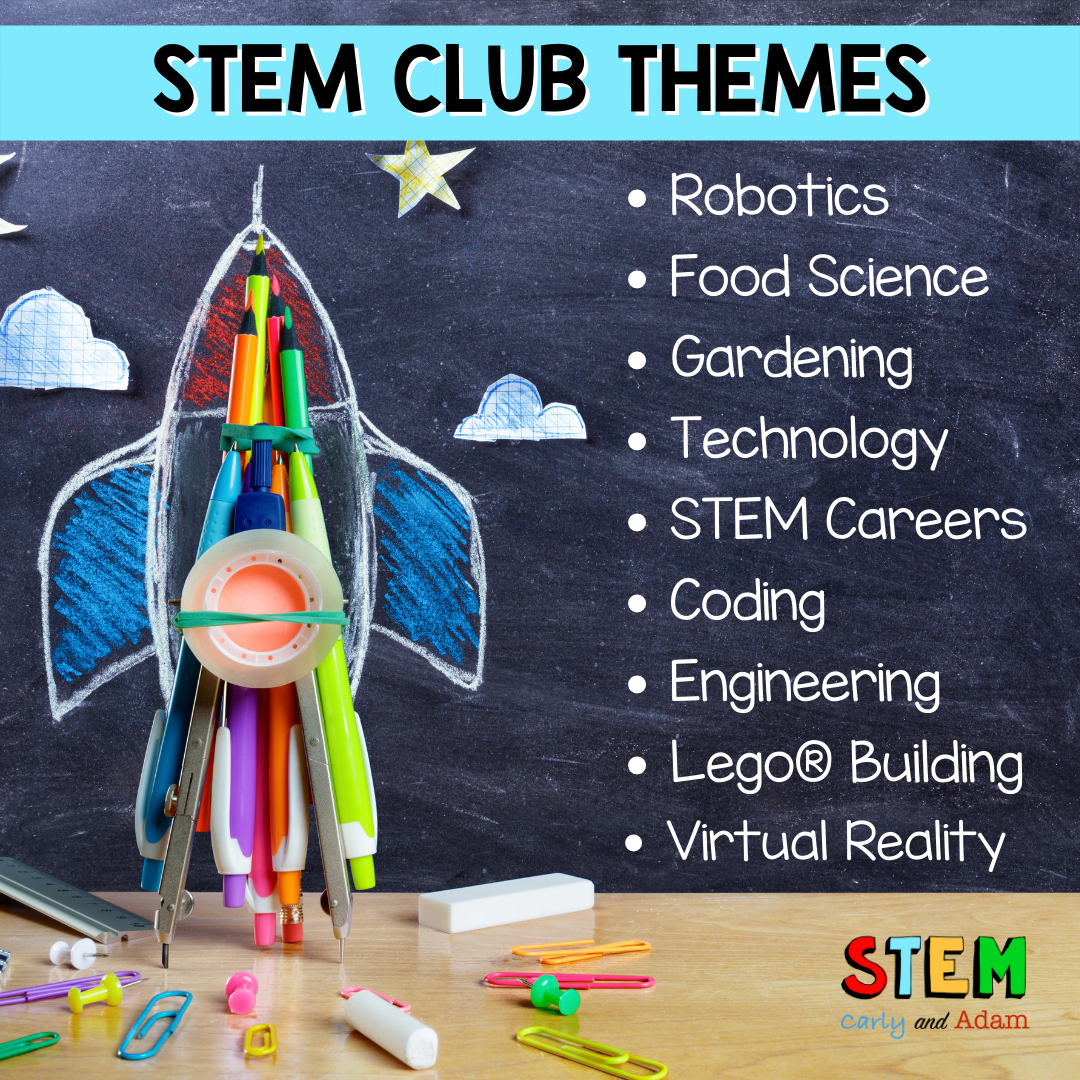How to Start an Elementary STEM Club
The following is a guest post from Dr. Jacie Maslyk.
You could hear the chatter heading down towards the cafeteria. The noises of curious learners working and questioning. Chairs moving and the teacher getting everyone’s attention. Things got quiet. Then a countdown in unison. 3-2-1! A short pause and then a loud round of cheering.
The after-school STEM club meets every Wednesday. This week they were building rockets and launching them in the cafeteria. The students, mostly 3rd and 4th graders had been working on this project for the last couple of weeks. Today, they were excited to try out their designs in a practice run before they head to the local park next week for their “official” STEM club launch party.
What is an After-School STEM Club?
A STEM club is a gathering of students, teachers, parents, and community members outside of school hours. The goal of these programs is to provide additional opportunities for students to explore STEM careers, topics, and challenges through hands-on learning.
Our school STEM club was organized through a parent organization with local volunteers and an outside group providing the STEM content and activities for students. Offered for an hour each week, the club was an opportunity for students to stay after-school and be involved in something that extended STEM learning but was also fun and engaging for students.
How do you Start an Elementary STEM Club?
So, do you want to start a STEM club? There are many things you should consider as you begin to grow this idea. Think through the 4 Cs (the same way we foster these components within our classrooms!). Communication, creativity, collaboration, and critical thinking are also important skills for educators to develop as you consider taking on this new adventure.
3 Steps for Starting an After-School STEM Club
Create the vision and criteria for club participation.
Communicate your vision with admin, parents, and community members.
Decide on your club themes and plan your content.
Communication
There are lots of people you will need to communicate with prior to starting a STEM club. Talk about logistics with your school leader. If you want to start a new club, be sure that you know the requirements and guidelines upfront.
Will your stem club meet at lunchtime? Or will it be an after school offering? Maybe the club will meet on Saturdays.
Not only do you need to communicate with school leaders for logistics and buy-in, but you’ll also need to communicate with students, parents, and families about the club, posting information on your website, school newsletter, or sharing through your school notification system.
You may also want to reach out to businesses or local colleges in your area for support in the form of resources and/or volunteers. The more support you can gather to bring your STEM club to life the better!
Critical Thinking
You will need to think critically about many different factors related to the startup of a STEM club.
What grade levels will your club focus on?
Is it for specific grades only or will it be offered school-wide?
Maybe you decide to offer the program across grade levels and create a mentoring opportunity for students in the upper grades to help those in the younger grades with hands-on activities.
Who will the club be for? Is it a “girls in stem” club? Or maybe you have a MineCraft theme in mind. Whatever you choose, be sure to communicate the expectations to students, staff, and families.
All of the things you plan to do in the STEM club may come with a cost. How will the club be funded? Will you acquire donations? Will you secure volunteers to help out?
Maybe you will apply for a grant to fund the club? There are a lot of grants available for learning beyond the school day. Grant funding can be a great way to get your club started and sustain it over time. These are all things to consider as you brainstorm and plan out the details for this new club.
Creativity
This is the fun part of the planning! What creative content will you engage learners in? Will the club focus on coding or on science experiments? Will it include outdoor learning about planning a school garden or sustainability? Will it have an art or music focus?
STEM can be integrated into many other subject areas. Choose a way to amplify STEM in your school, making it accessible to learners and fun for those who participate.
Think about the interests of your students. Perhaps you may want to create a club that is driven by their passions with a new topic each week. What topics will draw in the students in your school?
What are some possible STEM Club Themes?
· Robotics
· Food Science/Cooking
· Gardening
· Technology
· STEM Careers
· Coding
· Engineering
· LEGO® Building
· Augmented/Virtual Reality
Think about the ways that you might also tie in curricular connections. Pulling in concepts from the existing curriculum can also be a way to expand student understanding of STEM topics. The STEM club could focus on earth and space science or the simple machines of physics. The possibilities are endless!
Collaboration
Connecting with local partners will help your club to run more smoothly. Finding community partners to support your STEM club can help in many ways. Local partners can offer their expertise in STEM areas.
You can tap into the STEM careers that exist in your area and invite them in to speak with the students. Local businesses may even offer materials or financial resources to help keep your club going. For example, a local grocery shop owner might offer to donate snacks for your club or save cardboard boxes for you to use for projects. Seek out parent support, as well. They can be great collaborators for the club.
Make it fun!
Putting together a STEM club will be hard work, but it will offer great learning opportunities for your students. When everything is said and done, the most important thing is the students. Are they having fun, engaging in STEM learning? Are they extending their thinking and collaborating on design challenges? Are they building their curiosity in science, technology, engineering, and math? If you can answer “yes” to any of these questions, then your STEM club is sure to be a success!
For more STEM ideas, inspiration, and collaboration with other STEM teachers be sure to join our FREE Facebook group Elementary STEM Teachers with Carly and Adam!
We hope you have found this blog post helpful. To stay connected with Carly and Adam's teaching tips and classroom freebies be sure to follow us on Facebook, Pinterest, Teachers Pay Teachers, and subscribe to our blog!
An educator for the last 23 years, Dr. Jacie Maslyk, has served as a classroom teacher, reading specialist, elementary principal, and assistant superintendent. She is the author of STEAM Makers: Fostering Creativity and Innovation in the Elementary Classroom, Connect to Lead: Power Up Your Learning Network to Move Your School Forward (ISTE), Remaking Literacy: Innovative Instructional Strategies for Maker Learning and Unlock Creativity: Opening a World of Imagination With Your Students. You can read more on her blog, Creativity in the Making, at www.jaciemaslyk.blogspot.com. Connect with Jacie on Twitter @DrJacieMaslyk or email her at jaciemaslyk@gmail.com .









